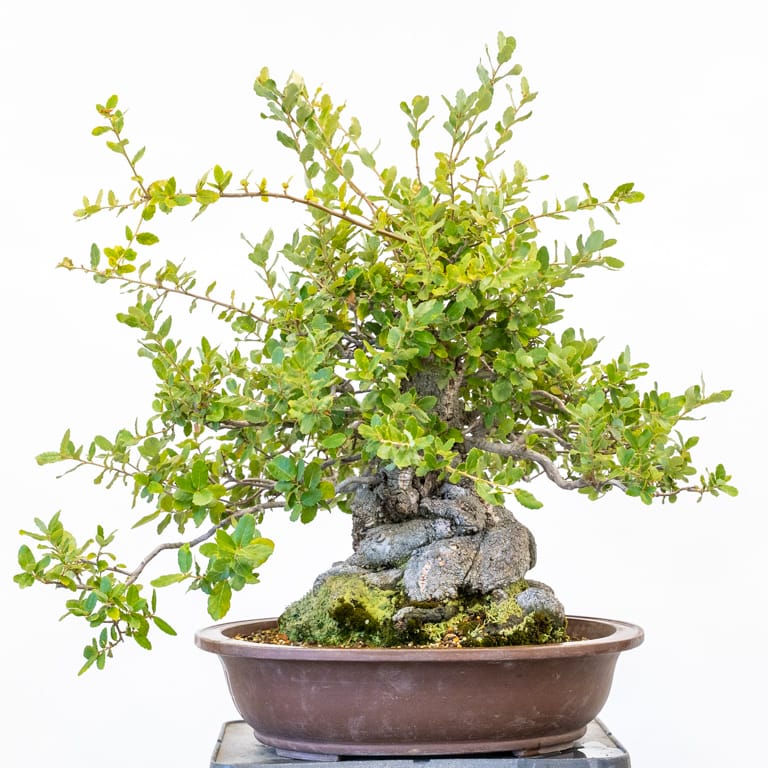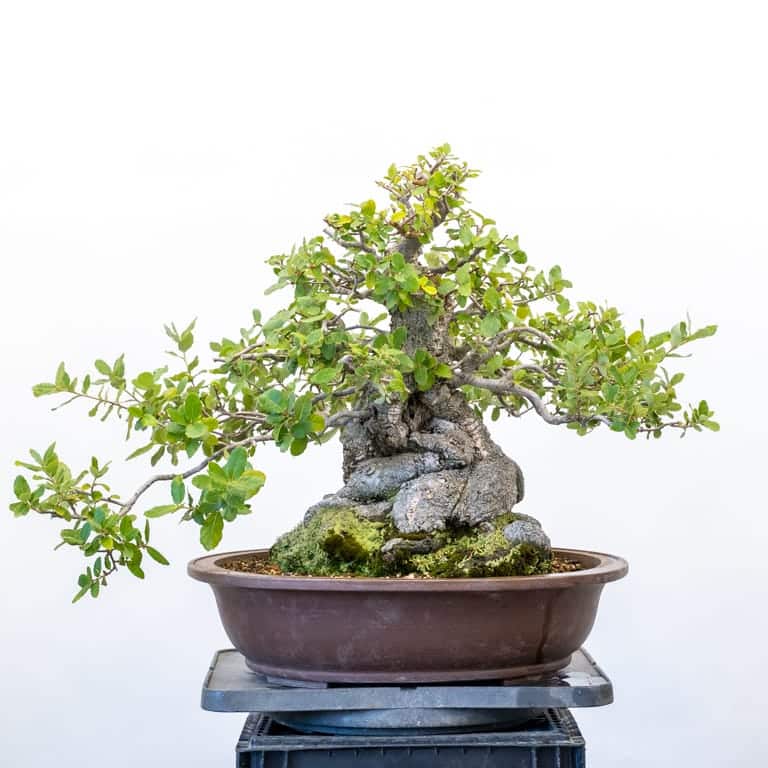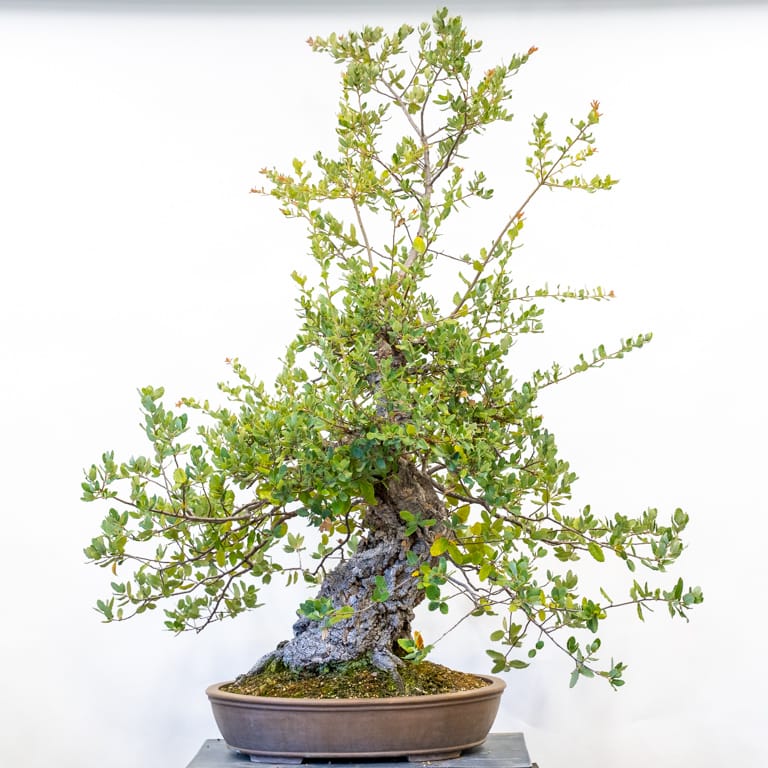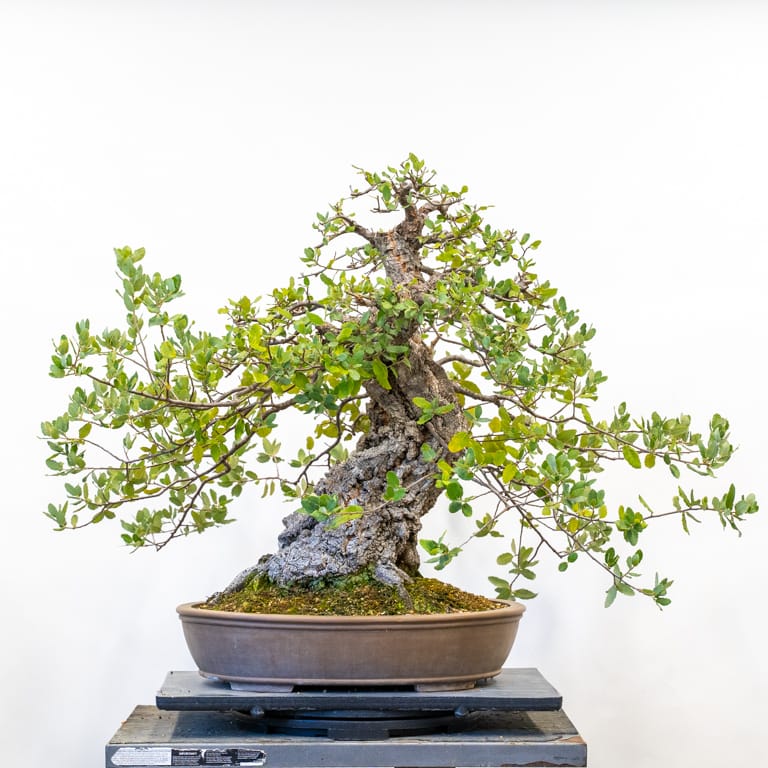After growing a trunk to the desired size, the next step is creating primary branches. And the bigger the trunk, the bigger we can expect these branches to be.
The main challenge is that most trees want to invest resources in the upper branches as they receive the most light. If we let upper branches grow freely, we reduce the odds that the lower branches will thicken at an appropriate pace – if at all.
Getting better growth on the lower branches requires frequent pruning of the upper branches. I’ve neglected this step on my cork oaks this year as I only brought them in for their first pruning this past week. The upper branches had grown strong and the lower branches were weak. The solution is to prune the upper branches and leave the lower ones alone.

Cork oak with strong shoots on the upper half of the tree

After pruning all but the lowest branches – 16″
The plan for the rest of the growing season is to maintain the silhouette on the upper branches while letting the lower branches run until they reach the desired thickness.
The imbalance was worse on one of my larger cork oaks. I’d let a sacrifice branch grow freely for a couple of years to thicken part of the apex, but I could have reduced it a while ago and kept the remaining apical growth in check.
This hasn’t caused problems for the tree but it did slow down progress.

Cork oak before pruning

After pruning the upper branches – 27″
When the lower branches reach the desired thickness I’ll shorten them and repeat the process to create taper. Once this basic structure is in place, I can focus on branch development on all of the branches to create the silhouette I have in mind for the tree.
✕
Subscribe to Indian Bonsai Art
New Posts Delivered Every Tuesday and Friday
Reader Interactions
This site uses Akismet to reduce spam. Learn how your comment data is processed.
